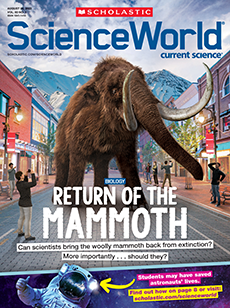This is not a living pile of dirt. It’s actually a common snapping turtle carrying a load of mud! She’s one of many turtles tracked by Task Force Turtle, an organization run by herpetologists—scientists who study reptiles and amphibians—and students at Washington College in Maryland. This turtle spent two weeks hanging out in the mud of a dried-up lake. When she emerged, she had a thick crust of dirt and grass stuck to her back.
By herself, this snapping turtle weighs about 6 kilograms (13 pounds). But the dirt on her back weighed even more: 8.2 kg (18 lbs). That’s heavier than the average bowling ball! The turtle didn’t seem bothered by the hefty load however. “She was just trucking along,” says Aaron Krochmal, a biologist who helped found Task Force Turtle.
